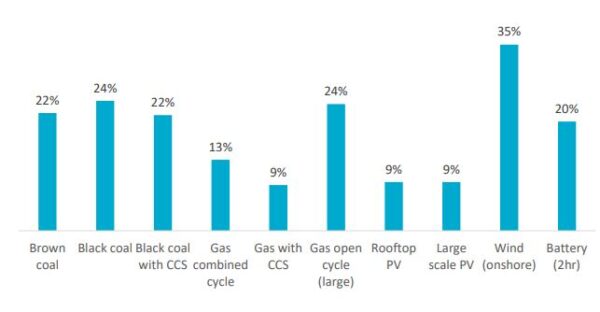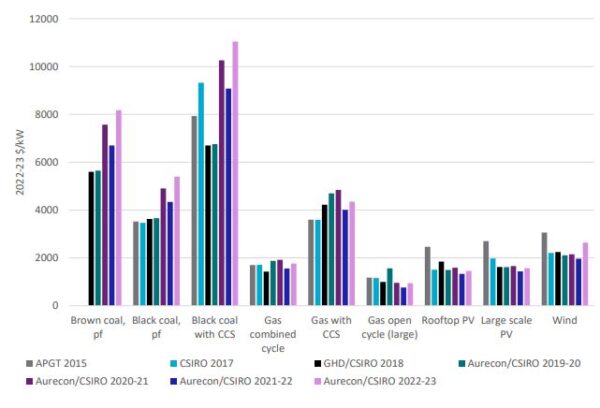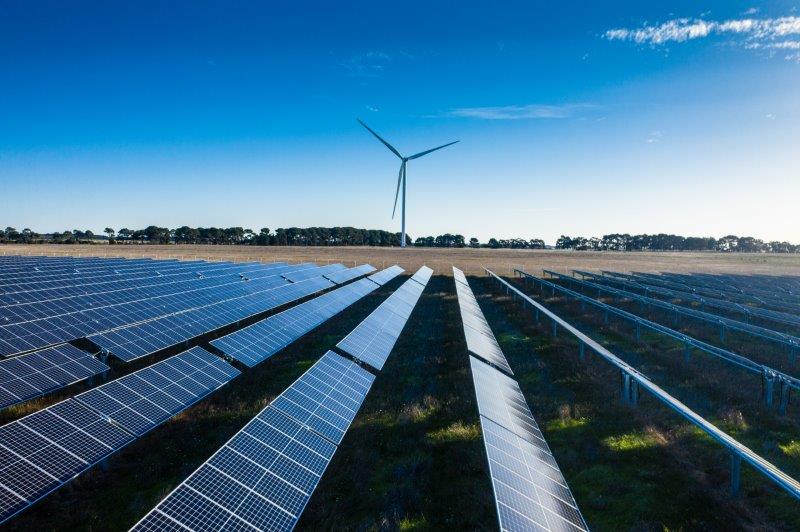The latest GenCost report from the CSIRO and the Australian Energy Market Operator (AEMO), reveals that the capital costs of all power generation technologies had increased by about 20% since 2021-22 but with significant diversity.
Cost increases were as low as 9% for solar and up to 35% for wind, a disparity that the CSIRO attributed to differences in material inputs and exposure to freight costs.
CSIRO Chief Energy Economist and GenCost lead author Paul Graham said the COVID-19 pandemic had resulted in lingering global supply chain constraints which impacted the prices of raw materials required in technology manufacturing as well as freight costs.
Graham said these factors have been exacerbated by the war in Ukraine but noted the inflationary cycle is assumed to be at its peak and that technology cost pressures felt in Australia are forecast to revert to normal levels by 2027.
“During the recovery from these global events, various input costs are showing signs of moderation,” he said. “However there is an expected delay due to future price uncertainties and the robust demand associated with the global energy transition.”

Image: CSIRO
Graham said modelling shows that technology costs have mostly peaked and are unlikely to extend beyond 2030 as “the global manufacturing capability established by that time will adequately meet deployment needs.”
The GenCost project, a joint initiative of the CSIRO and AEMO to provide an annual process for updating electricity generation and storage cost data for Australia, shows that solar is the cheapest form of generation in Australia now and out to 2050.
The report shows the current generation technology capital cost for large-scale PV is $1,516 per kW. Modelling projects that by 2050 that cost will reduce to between $513/kW to just under $700/kW.
The current cost for rooftop solar is $1,400/kW and that is projected to drop to between $483/kW and $619/kW by 2050.
The report does note that the final minimum cost level for PV is one of the most difficult to predict because, unlike other technologies, the historical learning rate for the technology has not slowed.

Image: CSIRO
Despite the up to 35% spike in costs, wind power remained one of Australia’s cheapest new-build generation sources, listing the current capital costs for onshore wind at $2,644/kW with cost reductions resulting in a price of about $1,600/kW to $1,900/kW by 2050.
The current capital costs for hydrogen is listed at $2,140/kW, while gas was costed at $1,706/kW and black coal came in at $4,964/kW.
The report also includes current costs for small-scale batteries, designed to be installed in homes. They are estimated at $16,000 for a 5 kW/10 kWh system or $1,600/kWh, including installation. This is more than twice the cost of large-scale battery projects.
This content is protected by copyright and may not be reused. If you want to cooperate with us and would like to reuse some of our content, please contact: editors@pv-magazine.com.









1 comment
By submitting this form you agree to pv magazine using your data for the purposes of publishing your comment.
Your personal data will only be disclosed or otherwise transmitted to third parties for the purposes of spam filtering or if this is necessary for technical maintenance of the website. Any other transfer to third parties will not take place unless this is justified on the basis of applicable data protection regulations or if pv magazine is legally obliged to do so.
You may revoke this consent at any time with effect for the future, in which case your personal data will be deleted immediately. Otherwise, your data will be deleted if pv magazine has processed your request or the purpose of data storage is fulfilled.
Further information on data privacy can be found in our Data Protection Policy.